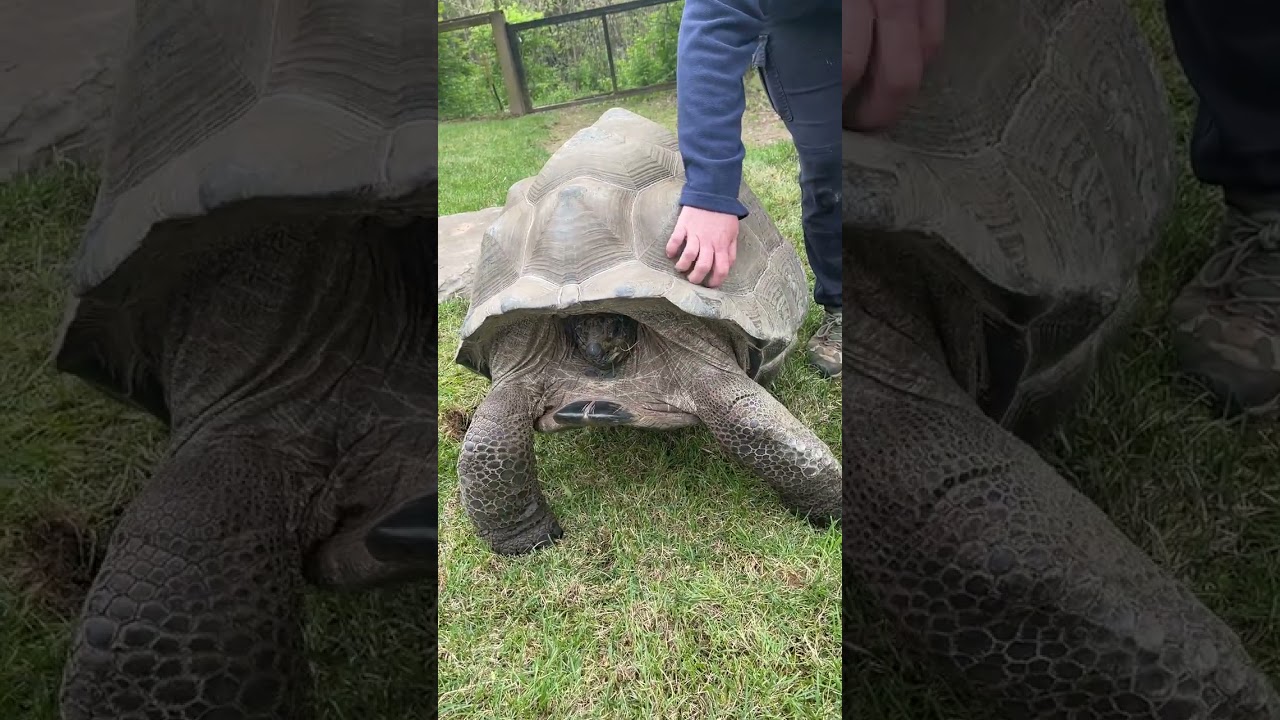– Understanding the natural behaviors of turtles and why they enjoy shell scratches
– The role of human interaction with captive turtles in zoo management and wildlife conservation
– Insights into the physical structure of a turtle’s shell and its importance to their health and well-being
– Best practices for responsibly interacting with turtles in captivity and in the wild
Turtles, creatures that have roamed the earth for millions of years, exhibit various fascinating behaviors that intrigue scientists and animal enthusiasts alike. One such behavior is their apparent enjoyment of having their shells scratched, a sight that captivates audiences and highlights an often overlooked aspect of their complex biology.
The physical structure of a turtle’s shell is central to understanding why they might enjoy a good scratch. Composed of over 50 bones, including the spine and the rib cage, the shell is an intricate piece of biological architecture that serves multiple functions, including protection from predators and environmental elements. The outer layer of the shell, known as the scutes, is made of keratin, the same material that forms human nails and hair. These scutes can feel pressure and touch, contributing to a turtle’s ability to interact with its environment and, arguably, to enjoy physical sensations such as being scratched.
Human-turtle interactions take on additional dimensions in the context of zoo management and wildlife conservation. For captive turtles, such interactions can serve as enrichment activities that promote well-being and stimulate natural behaviors. Zookeepers often employ shell scratches as routine care, helping foster a bond with the turtles and monitor their health more closely. These practices must be informed by a deep understanding of turtle biology to ensure they are beneficial and do not stress the animals.
Moreover, the interaction between humans and turtles, whether in captivity or the wild, raises important conservation awareness issues. Turtles face numerous threats, including habitat destruction, pollution, and the exotic pet trade. By fostering a positive connection between turtles and the public, conservationists hope to inspire support for turtle protection efforts. Engaging educational programs that feature turtles and their care, including the simple act of a shell scratch, can make the plight of these ancient reptiles more relatable to people.
Responsible interaction with turtles, especially in wild settings, is paramount. While a turtle in a controlled environment such as a zoo might be accustomed to human contact, wild turtles should not be approached or handled without a clear conservation-related purpose and professional oversight. Unnecessary handling can cause stress and risk to their health and disturb their natural behaviors. Observing turtles from a respectful distance remains the best practice for wildlife enthusiasts.
In summary, a turtle enjoying a good shell scratch opens the door to a broader understanding of these remarkable animals. From the physiological basis behind the behavior to its implications for zoo management and wildlife conservation, there is much to learn and appreciate about turtles. Enrichment practices in zoos and aquariums play a crucial role in captive turtles’ health and psychological well-being. At the same time, responsible wildlife viewing helps underscore conservation efforts’ importance. Through informed and respectful interaction with turtles, humans can contribute to the continued survival of these fascinating creatures for generations to come.
*****
Source Description
Although less sensitive than their skin, turtles and tortoises actually have nerve endings in their shells and can feel when being touched!

